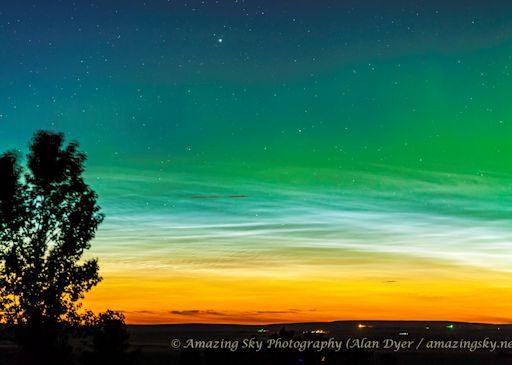NO METEOR OUTBURST? So far we have received no reports of a predicted gamma Delphinid meteor outburst on June 11th. If there was a stream of comet debris near Earth's orbit, either we missed it, or it was populated by meteoroids too small to produce naked-eye meteors. [Meteor radar]
AURORAS + NOCTILUCENT CLOUDS: On Sunday, June 9th, Alan Dyer of Gleichen, Alberta, Canada, went outside to see the colors of the sunset. He got more than he bargained for. Stacked atop the rosy glow of twilight were dual bands of electric-blue noctilucent clouds and green auroras:

"At times the auroral curtains appeared superimposed on the noctilucent clouds," says Dyer. "It isn't often we see the two phenomena together."
That's because they are completely unrelated. Auroras are caused by energetic particles from the sun raining down on Earth's upper atmosphere, causing the air to glow like the picture tube of a color TV. Noctilucent clouds are made of tiny ice crystals wrapped around bits of meteor smoke. Their electric-blue color comes from the scattering of high altitude sunlight. On June 9th the two phenomena overlapped for a rare display.